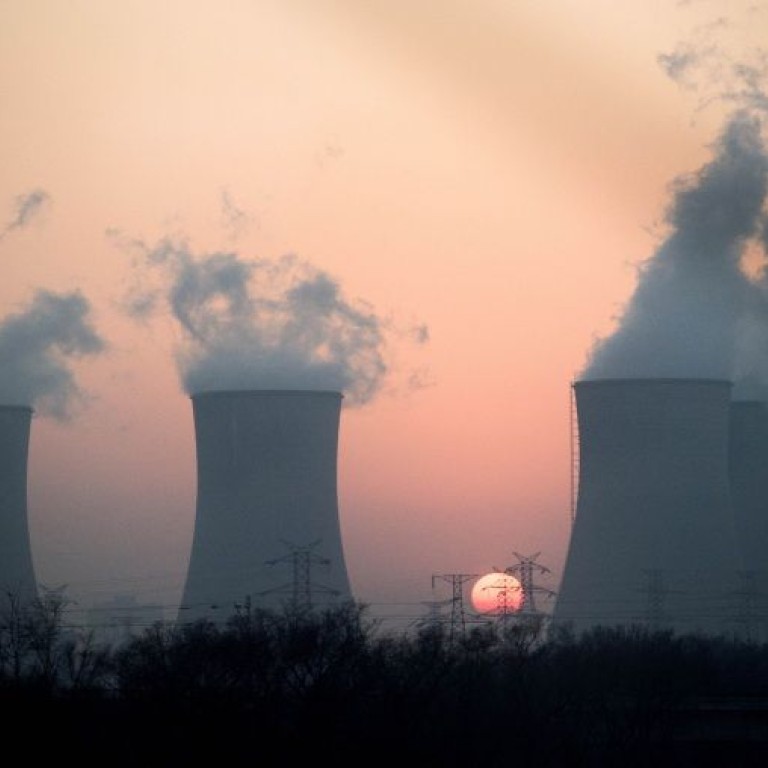
Coal-shunning China explores solar power, alternative energy solutions to beat pollution
Clean-energy alternative comes into play as the central government begins phasing out coal-burning plants to meet emissions targets
With solar energy production costs continuing to fall, the market is experiencing what many analysts are calling a boom. In many parts of the world, solar power is now cheaper than diesel oil, gas, coal or nuclear energy.
China, as it rallies to clean up its increasingly polluted air, has raised its solar energy target for this year, declaring it will add almost 2.5 times the capacity that the United States added last year.
China’s National Energy Administration (NEA) recently said more than 5GW of solar capacity was added in the first quarter of 2015, more than in the first two quarters of 2014 combined.
Newly released NEA data provide signs of how China plans to follow the ambitious climate-change targets that it agreed on with the US last year. In line with the terms of the deal, China’s carbon emissions will peak no later than 2030 and the non-fossil fuel share of its energy consumption will increase to 20 per cent, up from around 10 per cent in recent years.
Hanergy Holding Group - a multinational clean-energy power generation company and the world's largest thin-film solar power company that is the biggest producer of solar energy in China - plans to increase the number of user experience centres to 300 on the mainland this year and to 1,500 worldwide by 2017.
“Hanergy’s stores and experience centres are intended to introduce the Chinese masses to the concept of solar power,” says Michael Yang, executive president of Hanergy Product Development Group. “Hanergy’s thin-film solar technology is perfect for consumer applications, like rapid-charging solar energy strips that can charge cell phones and other electronic devices, as well as household solar solutions like rooftop panels and building-integrated PV [photovoltaics].
“Creating awareness about the huge potential of solar and clean energy in general is vitally important for China. In this sense, creating a network of brick-and-mortar stores that sell high-quality solar products is an important step in building public awareness about clean energy. With this raised awareness of clean energy, more people will adapt, and the pollution problem will gradually be eased.”
Burning coal for power is the main contributor to air pollution in China and most other developing countries, meaning that switching to clean-energy alternatives is imperative to solving their environmental crises. China has showed crucial progress in recent years, with new installations of renewable power sources surpassing installations of traditional sources.
Solar energy offers a unique value incentive over other renewables such as wind and hydropower because it is deployable on any surface the sun shines on and is easily distributed into the energy grid, while projects on the microscale are very feasible. That is not possible with some of the other technologies because of the large investment, space and environmental constraints.
Yang believes the future of clean energy will move away from large-scale power generation projects towards microscale power generation near the point of consumption. “This will take the form of things like rooftop and building-integrated solar. It just makes sense economically and in terms of infrastructure to get away from generating power hundreds or thousands of kilometres away from the point of consumption. With China’s unprecedented urbanisation boom, there is a golden opportunity to integrate solar into new building construction.
“We’ve coined the term ‘mobile energy’ [to convey] the idea that we’re getting away from grid-tied dependence and are moving towards an era where every household has the potential to generate enough power to fulfil its needs,” Yang says, adding that thin-film technology allows people to generate power wherever they go. This is the trend that he sees moving forward, and one that Hanergy intends to lead in order to rediscover blue skies across China.
The market for clean-energy technologies is massive, and there is plenty of space for cooperation across sectors and industries. While the use of renewables increases, so too will public awareness, which will push up demand at a grassroots level.
